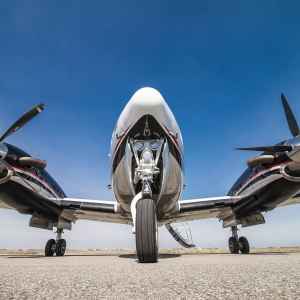Blog
4 good reasons to get Wi-Fi on board your private jets
Inflight connectivity has come through a long way and should provide an experience just like your office on the ground. That includes e-mail, VPN, phone calls, texting and web surfing during flight.
Furthermore, the current inflight connectivity systems are powerful enough to support video conferencing, sending large files, or streaming a movie (everybody needs to switch off the brain every now and then). But it might happen that it doesn’t works always perfectly.
1. More than on ground, Wi-Fi performance depends on many factors like network availability and capacity, the number of people connected, and where you are flying over (for example China). When you charter a jet and expecting to use Wi-Fi on board, please keep in mind that is an extra service and that it will be billed separately. It’s important to ask about how data is billed. Don’t worry, we can arrange fixed costs on certain aircraft, so that the outcome will be very convenient.
If costs are calculated on a metered basis, big bills can mount up when tablets and PCs execute software updates which consume unnecessarily MBs. So, especially for family fights, our recommendation is to switch off automatic updates from your children’s devices, and to select and download movies in advance. Due to the risk of high bills, some of the latest systems now have limits and filters that stop usage at a certain level and help you to save money.
The good news is that changes are on the horizon in Europe. There are some US companies which are studying the opportunity to offer lower cost and high-performance solutions to the European industry. Wi-Fi performances and costs will more convenient for customers flying in Europe.
2. Regarding data security, threats are the same as on ground. The difference is that air network works on the same CDMA technology as some of the world’s most trusted wireless brands. Furthermore, is possible to upgrade the jet’s VPN to provide you with more security, if that’s your preference.
3. Install the connectivity on board a private jet may have expensive costs: it depends very much on the age of the airplane. For instance, to upgrade an old airplane (8+ years old) with Wi-Fi up to the latest standards it can costs up to $1 million. However, pricing depends very much on the equipment installed and the connectivity plan chosen.
But often, the aftermath shows that the Inflight connectivity investment can be justified by the benefits: the choice of flying unconnected at the end can cost more than the Wi-Fi installation. The average compensation for a CEO is $10.5 million per year. That means that an hour of their time is worth about $5,000. And that’s just the CEO — think about the time of the other passengers on board, and you start to see the impact on the business when flying unconnected.
4. It’s often believed that only long haul flights need connectivity. In reality this is possible (but not yet) on all aircraft. Things are changing rapidly, and availability is starting to catch up with customer’s expectations.
In Europe, service is primarily satellite-based as there isn’t yet a single ground-based solution, unlike in the mainly-domestic US market. So airborne Wi-Fi is often included free to passengers in the US, using lower cost ground-based technology.
In Europe it is much more expensive for both the aircraft’s operator to install and maintain, and for the customer to access.
It is becoming increasingly important to be reachable during business hours. More than 8.5 billion emails are sent every hour worldwide, and the average person checks their phone six or seven times per hour. For Executives, being on top of business is as important as keep in touch with loved ones. A single email or text left unanswered for an hour or two can mean the difference between an opportunity won or lost. Not to mention day traders and those who need to keep track of markets in real time.

